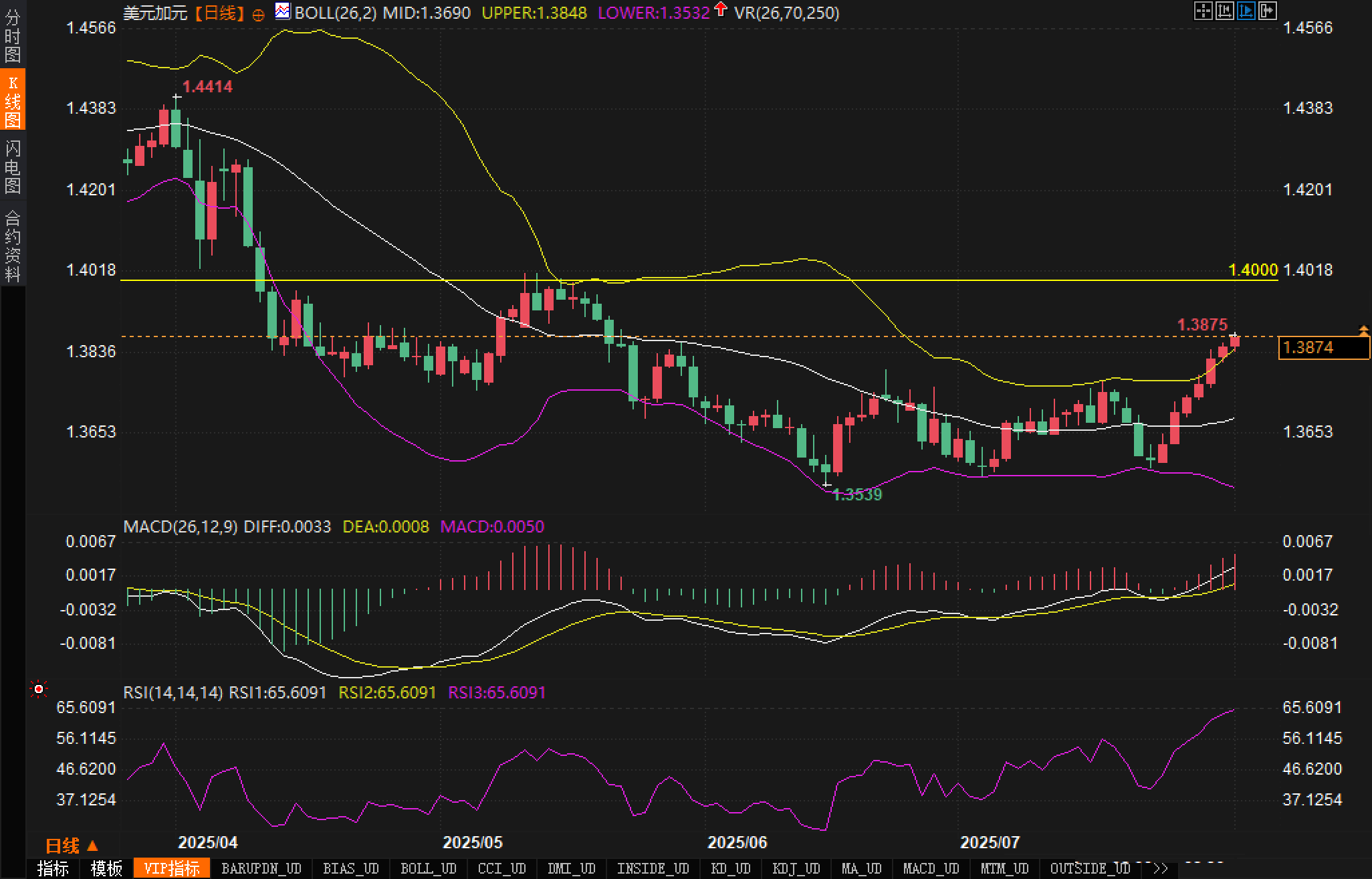With tariffs, non-farm payrolls, and PCE hitting the market, where will the Canadian dollar go?
2025-08-01 17:58:28

The US announced it would raise tariffs on Canadian goods from 25% to 35% in a week, further escalating trade tensions in North America. While the US accused Canada of being "uncooperative" in combating drug trafficking, market reaction suggests that thanks to the USMCA agreement, most Canadian exports will remain exempt from the high tariffs, resulting in a relatively mild decline in the Canadian dollar. Meanwhile, the US Personal Consumption Expenditures (PCE) price index indicated persistent inflationary pressures, adding further momentum to the US dollar and weighing on the Canadian dollar. Notably, Canada's GDP contracted for the second consecutive month in May. While manufacturing activity showed marginal improvement, the overall economic growth outlook remains challenging.
With the upcoming release of the US July non-farm payroll report, exchange rate volatility is expected to intensify again. Market expectations suggest that job creation will decline from 147,000 in June to 110,000, with the unemployment rate rising slightly to 4.2%. This data could be a key catalyst for the Canadian dollar's short-term performance.
Technical aspects:
Looking at the daily chart, USD/CAD has closed higher for several consecutive days, indicating an upward trend in the short term. The exchange rate is currently trading at a recent high, having broken through the upper Bollinger Band at 1.3848, indicating a strengthening short-term short squeeze sentiment.

First, observe the Bollinger Band pattern. The overall opening of the Bollinger Band is enlarged, and the middle track of the Bollinger Band is flat and slightly upward, indicating that volatility has begun to be released and an upward trend has been established.
Regarding the MACD indicator, both the DIFF and DEA indicators are above the zero axis, and the red column momentum continues to increase, showing a typical "strong golden cross" trend structure. The momentum has increased but has not yet diverged, supporting further upward exploration of the exchange rate.
The RSI indicator remains above 65, approaching the overbought area, but no obvious divergence has occurred, indicating that the current market is in a strong pattern. There may be a technical correction in the short term, but the trend has not changed.
Analysts believe that the key support level is around the middle Bollinger band of 1.3690. If there is a correction, this price level can be regarded as the first technical support. The key resistance above is the psychological barrier of 1.4000. If it is successfully broken through, it may open up a new round of upward space.
Fundamentals:
From a fundamental perspective, the Canadian dollar faces two challenges in the near term. On the one hand, the Trump administration announced that tariffs on Canadian goods will increase to 35% starting next week. While the USMCA agreement provides protection for some goods, overall market sentiment remains depressed. On the other hand, Canada's GDP contracted again in May, pushing the economy into a technical recession. While manufacturing data improved, it was insufficient to offset the overall weak economic performance.
Meanwhile, rising inflation in the United States, with the PCE price index rising again, supports the Federal Reserve's continued high interest rate policy, further boosting the US dollar. Furthermore, despite the weak ADP employment data, the market generally expects the non-farm payroll data to be generally solid. If the data meets or exceeds expectations, it will provide additional momentum for the US dollar, while the Canadian dollar may continue to face pressure.
Market sentiment observation:
Market sentiment has recently diverged significantly. While earnings reports from US tech companies have boosted risk assets, the market has generally shifted into defensive mode following a pullback in major European stock indices and weakness in commodity markets. As a commodity currency, the performance of the Canadian dollar is highly dependent on global risk sentiment and commodity prices. In the current environment, a rebound in the Canadian dollar is more likely to be seen as a short-term correction than a trend reversal.
The VIX index saw a volatile rise this week, indicating accumulating risk aversion in the market. This signal is unfavorable for the Canadian dollar's continued appreciation. Furthermore, market expectations for Canada's future interest rate policy are leaning dovish, further dampening the Canadian dollar's medium- to long-term potential.
Market outlook:
Short-term outlook:
Analysts believe that if tonight's non-farm payroll data is higher than expected, the US dollar may strengthen again, and the exchange rate may challenge the key resistance of 1.4000. However, if the non-farm payroll data is lower than expected, it may trigger a rebound in market bets on the Federal Reserve to cut interest rates this year, and the exchange rate may face downward pressure.
Medium- to long-term outlook:
From a medium- to long-term perspective, analysts believe that Canada's economy is weak, domestic demand is sluggish, and trade uncertainty has not been eliminated. The fundamentals are unlikely to support the continued appreciation of the Canadian dollar. Traders are focusing on the performance of non-farm payroll data, changes in the ISM manufacturing PMI, and the direction of North American trade frictions.
- Risk Warning and Disclaimer
- The market involves risk, and trading may not be suitable for all investors. This article is for reference only and does not constitute personal investment advice, nor does it take into account certain users’ specific investment objectives, financial situation, or other needs. Any investment decisions made based on this information are at your own risk.





















